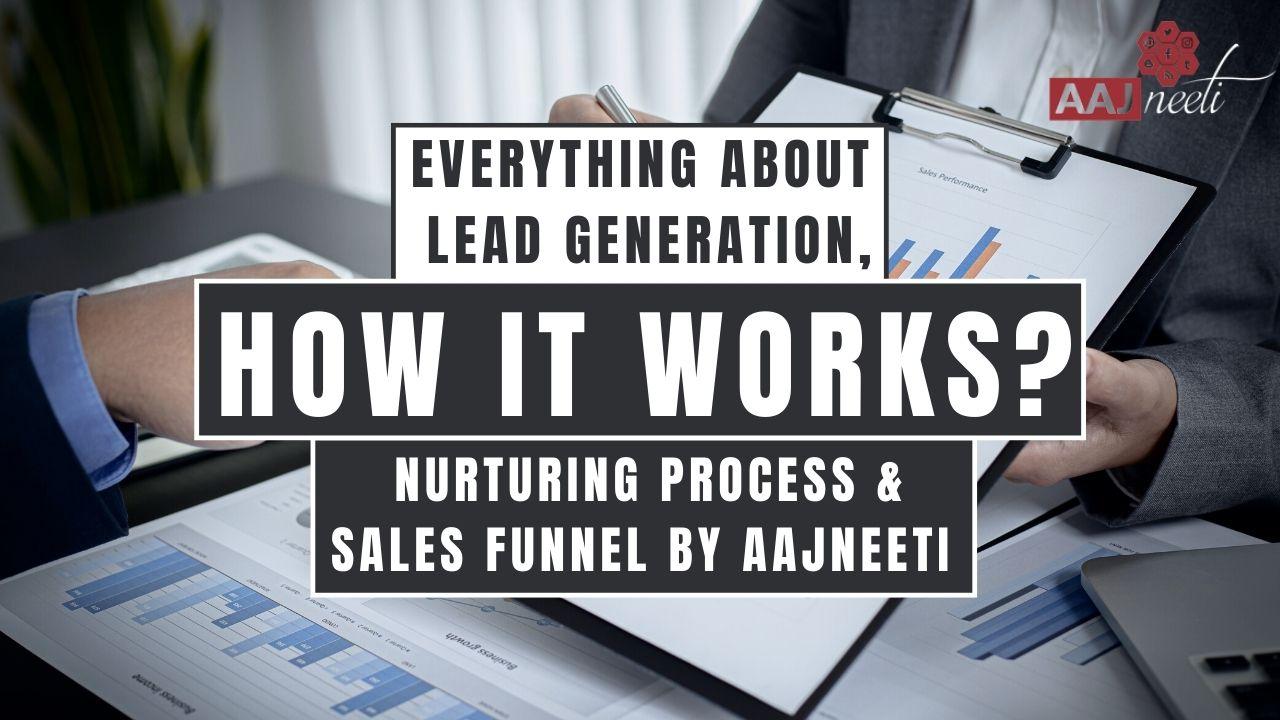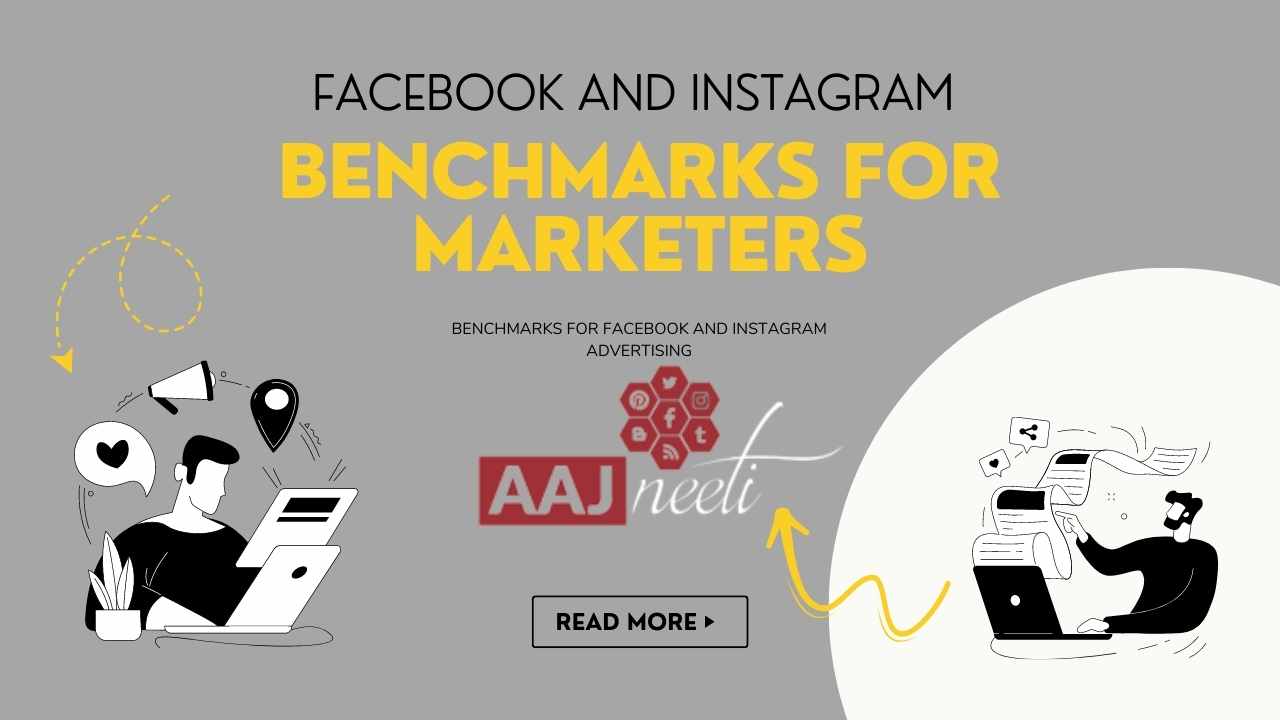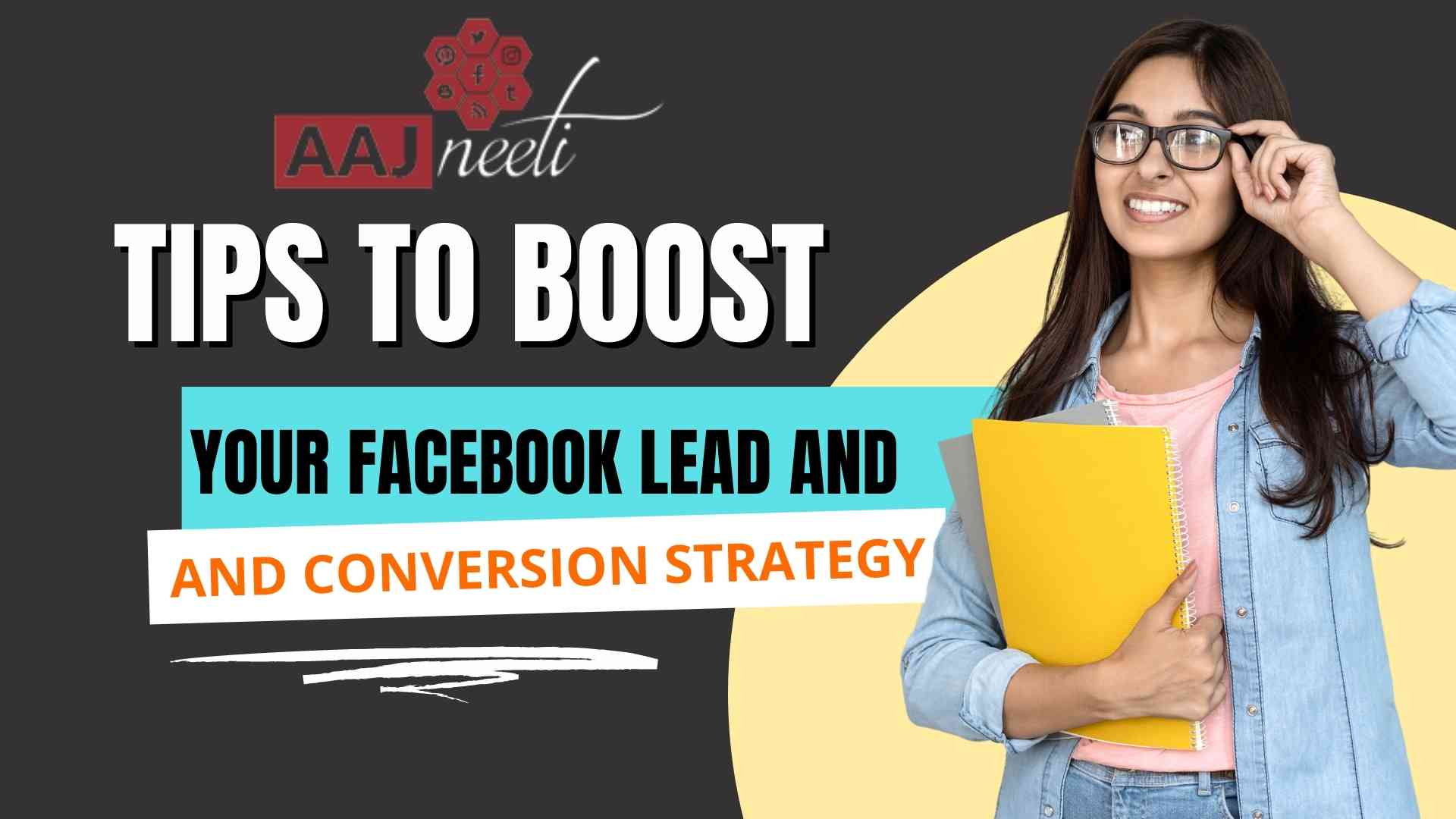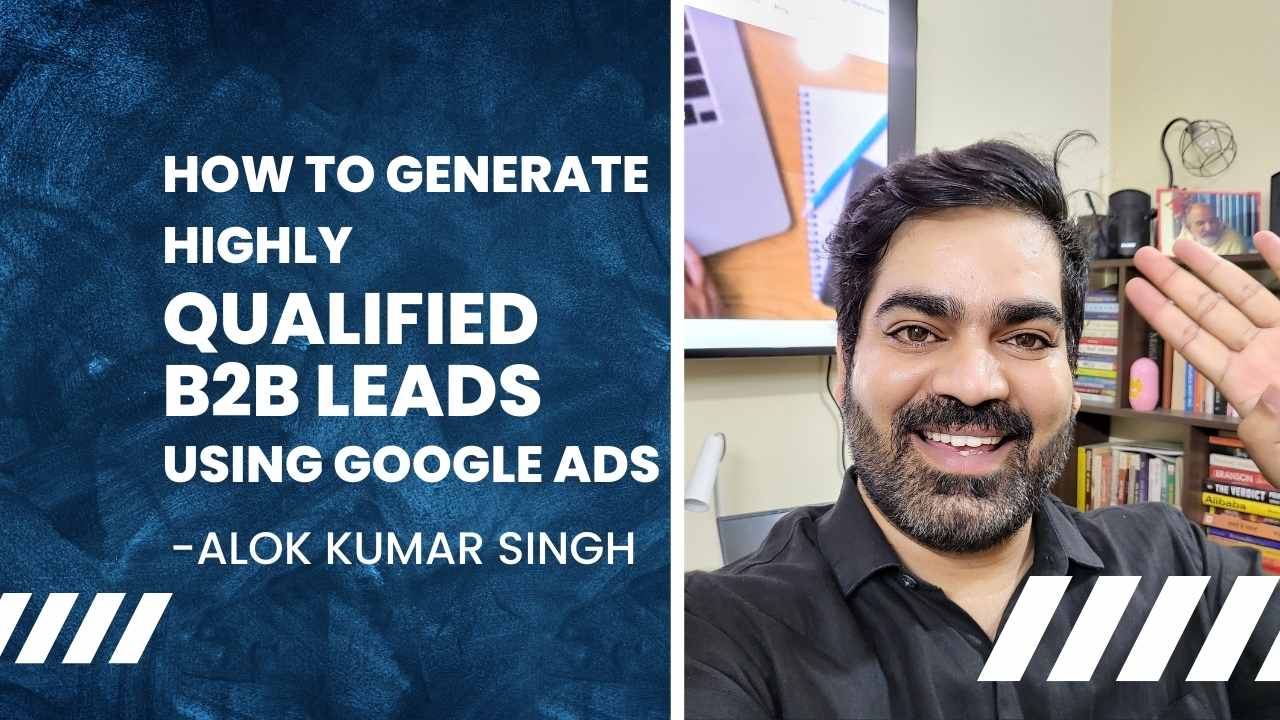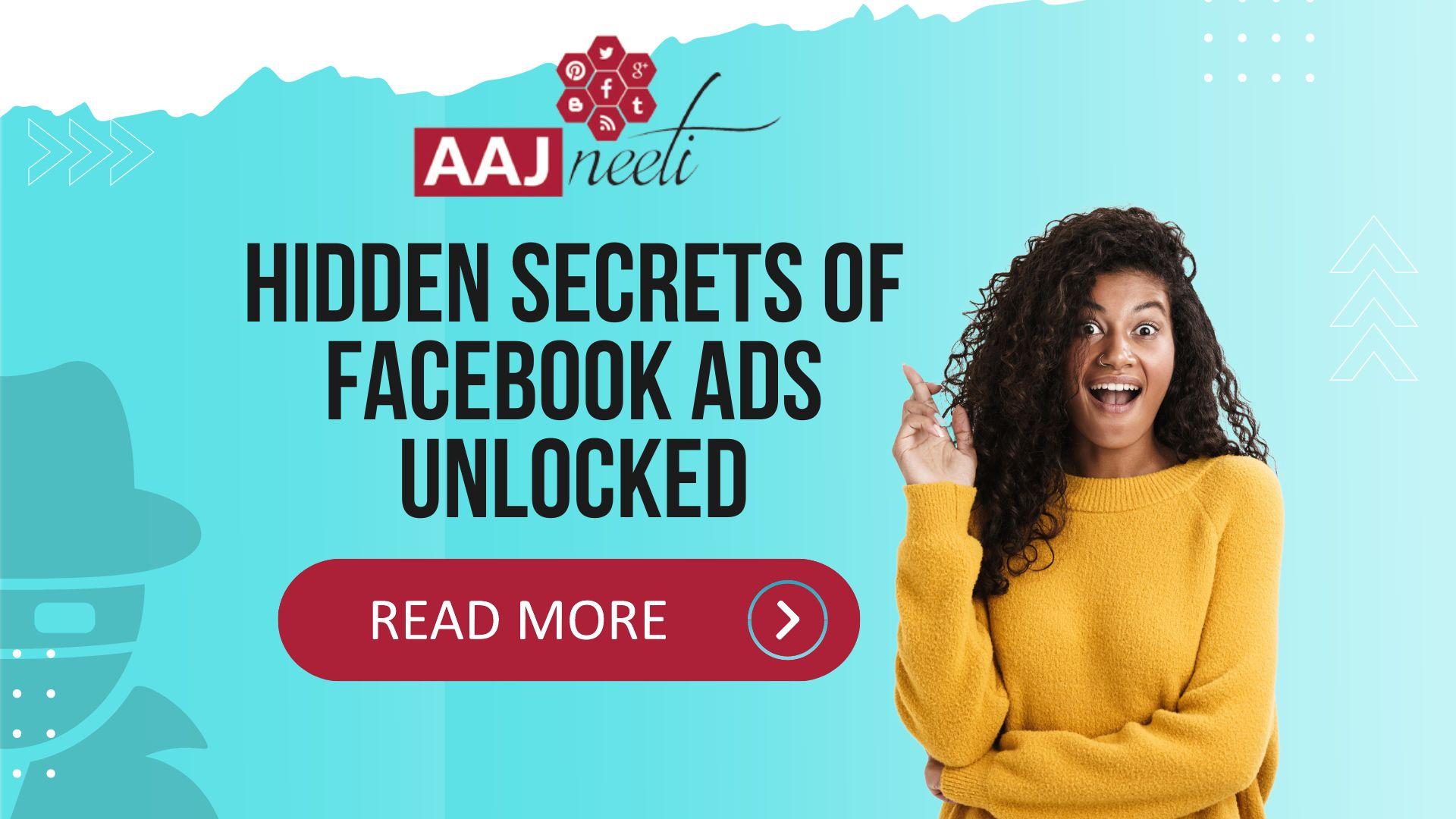Programmatic advertising, at its core, is automating the buying and selling of advertising media using technology. If you’ve gone to Google AdWords and found out an account and developed ads to be shown for a selected search phrase then you’ve got developed a programmatic ad you’ve got established that it’ll only be shown upon a selected trigger like the search phrase. you’ve got automated the display and therefore the trigger of that creative to be shown to a user who shows themselves to be relevant in trying to find what you offer. you’ll use this technique for branding, to extend your reach and awareness, for a campaign-specific objective, also as retargeting. this text aims to acquaint the reader with the meaning, process, advantages, and drawbacks of programmatic advertising as an efficient method to extend the reach and attract people to their business or brands
Understanding how the varied components of the programmatic advertising ecosystem that operate together are often complicated; but you’ll have heard of words like demand-side platform (DSP), supply-side platform (SSP), data management platform (DMP), ad servers, ad exchange, and ad networks. Let us understand what they mean and the way it works with programmatic ads.
A demand-side platform (DSP) could also be a tool or software that allows advertisers to buy for ad placements automatically. An advertiser signs up with a DSP, that successively is connected to an ad exchange. The ad exchange is the place where the actual buying and selling of ads and inventory takes place. When a visitor reaches an internet site that’s connected to the ad exchange, an auction signal is shipped to the exchange. The exchange then asks the DSP if the advertiser has any ads which may fit the location. If it does, the DSP sends a symbol to enter a real-time bidding auction in conjunction with other advertisers to compete over the situation. The winning bidder gets to means his ad to the web site visitor. this is often the inspiration of programmatic advertising on the advertiser’s side.
A Supply-Side Platform (SSP) is used by publishers to connect their inventory to ad exchanges
The SSP connects to an ad exchange and tells it what quite an inventory is out there – and thru Real-Time Bidding, this inventory is automatically auctioned off to the absolute best bidder. An SSP can hook up with several different ad exchanges to maximize the publisher’s exposure to potential buyers.
A data management platform (DMP) is employed to gather, store, and type information. In programmatic, DMP’s are most often utilized together with a Demand-Side Platform on the advertiser’s site – or a Supply-Side Platform on the publisher’s side.
To take full advantage of the varied benefits of programmatic advertising, a Demand-Side Platform must be connected to a knowledge Management Platform. The DSP is what handles the actual buying of ad space, whereas the DMP is employed to sort data and fuel ad-buying decisions. A DMP on its own is essentially a file with information on users, and if it’s not connected to a DSP it can’t do much. Likewise, a DSP on its own cannot make informed decisions on where to buy for
ad space. They both need to exist in the ecosystem. Many Demand Side Platforms now offer DMP solutions directly into their tools, to offer advertisers a more complete solution.
Programmatic deals
Contrary to the normal media buying process, programmatic advertising might not necessarily involve advertisers and publishers performing on a one-on-one basis to serve ads. The ad delivery depends on the sort of programmatic deal chosen., but you might be leaving money on the table if you’re not taking advantage of each type of programmatic deal. The key to maximizing revenue is to know just as much about the way deals can be structured as you do about your inventory. Let’s check out the key programmatic deals:
1. Real-Time Bidding (RTB)

Also referred to as open auction or open marketplace, real-time bidding (RTB) has become
synonymous with programmatic media buying, primarily due to its widespread usage. The ad slots are hospitable to everyone in RTB, and they’re sold through an open auction sort of bidding.
The very best bidder gets the spot, the entire process takes place in real-time, and advertisers can
choose ad slots as they’re made available.
It works like this: As a visitor enters an internet site, an invitation is shipped to an ad-exchange with information on the web site alongside visitor data. This information is then matched against available advertisers and a real-time auction takes place between the advertisers that match the standards. As an example, let’s say you visit an internet site that sells organic pet food, but you don’t make a purchase. Later you visit your favorite news site, and suddenly you see ads about organic pet food everywhere!
These ads are placed ahead of you with the assistance of Real-Time Bidding. During the
time it takes you to load the web site an auction takes place between the organic pet food brand and
everyone else who’s also curious about showing you ads. The winning bidder gets to display its ad to you on the publisher’s website.
Real-Time Bidding enables better and quicker targeting, ads to be bought and sold on a
per-case basis, meaning only visitors who are in your target audiences are going to be subjected to the ad.
2. Private Marketplace (PMP)
The private marketplace functions in similar veins as RTB apart from the very fact that it’s available to advertisers on an invite-only basis. privately or closed auction, publishers usually put aside a
premium ad inventory reserved just for selects advertisers. Many DSPs have their PMPs that
are accessible exclusively to the DSP users/customers. Considering the advantages, it offers to publishers, PMPs are primarily employed by websites and publications with mass reach. Contrary to RTB, the advertiser employing a PMP knows which websites their ads are being served on, allowing them to live the accurate ROI of their ads.
3. Preferred Deals
In preferred deals, advertisers get to settle on the ad inventory at a hard and fast price even before it’s made available on private marketplaces followed by on open auctions.
Also referred to as spot buying, the negotiation in preferred deals takes a refined approach as both the parties agree on the pricing, targeting, etc. beforehand.
The advertiser is given a sneak peek of the publisher’s ad inventory and isn’t sure to make any
purchase. Advertisers can use a DSP to know their audience and determine whether to
purchase the ad impression.
4. Programmatic Guaranteed
Programmatic guaranteed, also referred to as programmatic direct or automated guaranteed, follow
the normal approach of media buying. Here, the advertiser and publisher interact and negotiate on a one on one basis. Unlike other media buying types we checked out, programmatic direct doesn’t
follow a bidding process. The inventory is sold on to the advertiser after the negotiation. Programmatic guaranteed provides advertisers the power to settle on when it involves ad
inventories, prices, audience targeting, and frequency capping. it’s employed by advertisers that know precisely where to put their ads and have hefty advertising budgets.
After choosing the deal best suited to your convenience, the next important step would be to choose the appropriate Programmatic advertising channels/formats which include the following-
1. Display Ads

While the term ‘display ads’ is employed to ask any sort of online visual ads, within the context of
programmatic ads, ads only placed at the header, footer, or sidebar are considered to display
ads. Advertisers and publishers work with display networks like Google, Microsoft, or Snapchat
to increase the buying and selling of ad slots. Publishers generate revenue supported by the clicks and
impressions data collected by the display network.
2. Video Ads

The recognition of programmatic ads continues to grow as video continues to become one of the most preferred mediums of content consumption. There are three main sorts of video ads. 1. In-stream ads: These ads appear within the video player itself. as an example, the advertisements that are run before a YouTube video are called in-stream ads. There are three sorts of in-stream ads:
I. Pre-roll: These ads appear before the video begins to play.
II. Mid-roll: Mid-roll ads run within the middle of the content. These ads are notorious for interrupting the viewing experience.
III. Post-roll: Post-roll ads appear after the video ends.
2. Out-stream Ads: Out-stream ads appear in between online articles. These are placed either
within the content or show up as pop-up windows.
3. In-display ads: These ads aren’t displayed within the video player but in search results or video
recommendations.
3. Social Ads
Social media platforms collect a huge amount of knowledge from users to reinforce their targeting
capabilities. Programmatic social advertisements use this data to make a decision who will see their ads, the ad format, ideal time, and frequency caps. This information helps advertisers optimize their ad spend. Furthermore, social ads aren’t exclusively restricted to platform ads. Programmatic influencer marketing automates influencer marketing campaigns by identifying the proper influencers, getting them to advertise and campaign to the appropriate audience
4. Audio Ads

We will identify three key reasons for the growing adoption of programmatic audio ads:
While popular podcasts still follow the normal sponsorship model to put ads, programmatic
audio can amplify revenue generation efforts. Programmatic audio platforms believe real-time audience data to put ads and utilize engaging display and video ads to optimize the user experience. The present major players in programmatic audio are Google, SoundCloud, Pandora, BBC, and
Rubicon Project.
5. Native Ads
Native ads follow the shape and feel of the medium they’re being served on. In programmatic native advertising, advertisers work with a DSP to settle on which impressions to shop for and their price, while publishers sell their ad slots through an SSP.
consistent with research by IPG & Share through on native ads, consumers checked out native ads 53% more often than display ads. Unlike programmatic display ads that always appear at the header, footer, or sidebar, programmatic native ads can appear in other locations on a webpage or app.
6. Digital Out-of-Home (DOOH)
Digital out-of-home is that the digital and analytically superior evolution of the normal out-of-home
advertising. the normal DOOH sales consisted of advertisers getting into touch with the network
and deciding on audience targeting, pricing, screen selection, etc., manually.
Although programmatic DOOH may appear à touch inexplicable initially, it follows an equivalent media buying process as RTB and programmatic direct. Although measurement and attribution are still challenging in programmatic DOOH thanks to its nascency, advertisers can run targeted and highly engaging retargeting thanks to its features like geofencing.
Another important aspect of utilizing programmatic advertising to the fullest is to know and choose the appropriate targets for advertising. There are several ways one can choose to target their ads with programmatic advertising, to achieve better accuracy and results. These are the foremost common ways advertisers use to focus on their ads:
1.Contextual Targeting
Contextual targeting aims to point out ads supported the context of an internet site. For instance; a fashion brand might choose to be seen on Vogue Magazine’s site, but a company selling financial services may have better luck with Forbes.
2. Keyword Targeting
A type of contextual targeting that focuses on serving ads supported specific keywords. For instance, if you sell bicycle spare parts, you’ll supply an inventory of keywords based around that subject. You might want to be seen in articles mentioning cycling or bicycle safety, but not motorcycle gear or electric bicycles. Your list of keywords is matched to the keywords used in the article to supply the simplest match for your ads.
3.Data Targeting (Audience Targeting)
Ads also can be shown supported user’s cookies instead of the context of an internet site – meaning that a user who’s previously visited your financial services site might be served a billboard for your brand albeit they’re visiting Vogue next since they need already shown an interest in what you’re offering.
4.Geo-Targeting (Location-Based Targeting or Geo-Fencing)
Brands use geo-targeting to reach customers that are relevant to their locality. If you run a physical haberdashery in Paris, it’d not add up to point out ads to people that are based in Rome.
For international brands or online services, geo-targeting can be used to serve language-specific ads tailored to audiences in a certain country.
5.Retargeting

On average 2% of visitors convert when they visit your site. Retargeting is aimed at bringing back the other 98%. Whenever a potential customer visits your site a cookie is placed on their computer. This information can later be wont to target ads to the present specific person, increasing the probability of them returning to shop for from you.
Retargeting is a highly efficient way of re-engaging people with your brand since they already have a relationship with you.
A programmatic advertising platform enables marketers and advertisers to automate the purchase and management of their digital ad campaigns. Including media buying, ad placement, performance tracking, and campaign optimization. Many platforms also offer an editing tool to style campaign creatives. Publishers manage their ad inventory through programmatic advertising platforms. Ad inventory or advertising inventory is that the ad space a web or offline publisher has got to sell on their website, mobile, app, video, and so on.
Now that we’re clear on the concept of programmatic ad platforms, let’s look at the top five platforms geared towards 2020 and beyond:
1. SmartyAds
SmartyAds offers a full-stack programmatic advertising ecosystem to cater to brand, agency, publisher, and app developer needs. This ecosystem consists of a Demand-Side Platform (DSP), Data Management Platform (DMP), Supply-Side Platform (SSP), and an ad exchange. SmartyAds also offers a white-label solution that allows brands to build their product on top of it.
This platform enables advertisers to run display, in-app, video, and native advertising campaigns across desktop and mobile devices. Features like ad creation tools, robust analytics, and rich targeting capabilities help advertisers with inventory selection, ad placement, and campaign management.
SmartyAds’ header bidding solution enables publishers to run pre-bid auctions to sell the ad inventory at a premium price. App developers can use the platform to run in-app ads in formats like rewarded video, native, banner, and playable ads.
2. TubeMogul (A Part of Adobe Advertising Cloud)
TubeMogul’s programmatic advertising software enables brands and agencies to plan, run, and optimize their advertising efforts. TubeMogul gives brands access to premium ad inventory through the real-time bidding (RTB) process. Brands also can import their direct deal or programmatic reserves inventory into the software.
You can run desktop video, mobile video, connected TV, display, native, and digital out-of-home (DOOH) ads through the platform. TubeMogul’s programmatic TV buying solution can be used to access the inventory, which is not usually available through traditional media buying.
TubeMogul launched Non-Human Traffic Credit Program in February 2016, a program that compensates advertisers for fraudulent traffic.
3. simple.fi
Simple.fi Programmatic Marketing Platform may be a localized programmatic platform that permits advertisers to shop for ad inventory on multiple RTB ads. It has developed its proprietary DSP, DMP, and SSP, among other data technologies. Advertisers can build audiences on various criteria such as device, OS used, browser, geography, intent-based search data, etc. You can import their CRM data to enhance audience targeting. The audience is often further optimized on the search and contextual keywords, IP data, frequency capping, CRM data, etc. You can also use the look-alike and search-alike modeling to expand your audience base.
Simple.fi’s reporting suite provides over 60 in-built report templates and lets you generate ad-hoc reports or schedule customized reports.
4. MediaMath
MediaMath’s omnichannel programmatic marketing platform allows advertisers with end-to-end campaign management. MediaMath’s DMP helps marketers by integrating data sets from first- and third-party sources, which can be segregated into segments before activating them. Advertisers can connect with their most precious audience using the MediaMath Audience feature.
The omnichannel DSP takes care of omnichannel ad campaigns that include mobile, display, video, audio, native, and Digital Out of Home (DOOH) ads. The Creative Management and Dynamic Creative features enable marketers to deliver a uniform brand experience through all mediums.
Brain Insights and Brain Optimization utilise ML and predictive modeling
5. PubMatic
PubMatic provides solutions for both – brands and publishers.
Advertisers can access a high-quality ad inventory through PubMatic’s private marketplace. The media buyer console aids advertisers plan and manage programmatic direct campaigns across different ad formats and channels. PubMatic’s fraud-free program refunds a credit amount in case an ad fraud is detected. Advertisers use the real-time analytics feature to optimise the campaigns.
Utilising the RTB advertising technology, publishers can get the highest yield on each impression. The ad quality feature scans the creative automatically and manually to detect security violations and ensure the publisher user interface (UI) doesn’t get messy.
Now that we are acquainted with the know-how and process of programmatic marketing, let’s dive into its advantages and disadvantages to gain a deeper understanding.
The advantages include –
1. Real-time Insights
In traditional advertising, it takes a significant amount of time to get the results of advertising campaigns, and there’s no exact method of knowing their accuracy. Programmatic advertising, on the opposite hand, gives advertisers real-time information on the performance of their ad campaigns. Advertisers can utilize this campaign data to gather more information about their target audience and campaign.
2. Enhanced Targeting Capabilities
You can adopt two methodologies to connect with your target audience.
In the first approach, you’ll combine the first- and third-party data to enhance the audience profile and reach bent them with accuracy. The second approach pertains to contextual advertising. Contextual programmatic advertising derives data from both – the user profiles and therefore the page content, to deliver ads at the foremost appropriate place. For instance, you can serve ads of a CRM application to a marketer or salesperson on business publications. Apart from these strategies, advertisers can use remarketing, geo-targeting, data and IP address targeting, and website or app targeting to adopt a more refined approach towards targeting. These improved capabilities provide plenty of room to advertisers to personalize their ads.
3. Greater Transparency
Since advertisers are conscious of the ad inventory they’re purchasing and therefore the audience they’re targeting, they will trace the performance of their ads, see how their budget is being spent, and optimize their campaigns in real-time to get the results they want. Also, the lack of human dependence reduces the risk of human error.
4. Better Utilisation of the Budget
As programmatic advertising provides advertisers with real-time campaign performance, they will invest their budget in avenues that will get them the simplest results. This efficient investment helps them to spend their campaign budget effectively and yield better ROI.
5. Tackle Ad Frauds Effectively
The digital advertising industry is marred by unethical ad practices. Publishers have long been duping advertisers by implementing various fraudulent tactics.
The transparency offered by programmatic advertising platforms enables advertisers to gauge each publisher in real-time supported the performance of their ads and choose those that deliver justifiable results.
Major programmatic ad platforms also curb ad frauds by blocking fake bot traffic and pre-rolls ads and offer ad credits in case of fraudulent tactic slips through their system.
Disadvantages of programmatic advertising include
1. Saturation
Thanks to its convenience, marketers have adopted programmatic advertising quickly. The early days of programmatic allowed marketers to cast a good net of ads and immediately reap the advantages, however as brands still infiltrate the display-space and bid for spots, programmatic has become over-saturated. With a market as densely populated as rush hour traffic, it has become increasingly difficult for marketers to drive successful campaigns. More bidding competition means more brands fighting to get their ads in front of your audience and ultimately higher a price point to win the spot.
2. Having unrealistic goals for display campaigns
Where programmatic can leave many marketers disappointed is expectations. Unfortunately, low click-through rates are not any stranger to programmatic. With a mean click-through rate at around 0.05%, programmatic may be a dream tool for top-of-funnel brand awareness. For those in the lead generation game, programmatic is just one piece of the puzzle. Maturing leads down the funnel requires additional campaigns and methods. Before launching into a campaign, it’s important to determine a goal and determine whether programmatic can assist you to get there.
3. Problems of coming up with creative and original ads
Without compelling and eye-grabbing creatives, your programmatic display campaign will suffer. As a consumer, one sees a lot of advertisements cross our path, and consequently, we know a bad ad when we see it. All hard work is susceptible to prove useless if it doesn’t catch the eye of the audience. Ads with an off-pixel image, offensive language, or false promises can turn the audience off. You have a fleeting moment to capture your viewer’s attention, you would like to make sure you’ve got the proper tone of voice and polished creatives.
4. Targeting the wrong audience
A programmatic campaign can quickly fall through with the incorrect audience. Without getting your ad ahead of the proper people, your costs will soar while your ROI plummets. Targeting is your only strategy to urge your ad ahead of the people that matter most, so how do marketers get caught within the bad targeting trap? By only that specialize in surface-level demographics like age, gender, job title, location, and income. These classic parameters are extremely limited. By only scratching the surface, they don’t fully capture the behavior of your target audience.
5.Bot traffic
Bot traffic may account for a few of the traffic available through programmatic advertising opportunities. This is the character of any internet traffic nowadays, but using programmatic ad buying, potentially, increases that risk of bot traffic because dynamic ad buying means there’s usually no direct relationship between publisher and advertiser. However, the planet of programmatic advertising is consistently performing on finding ways to eliminate bot traffic and with new service providers during this area, the technological advance
Before diving into the tips and tricks to be a successful advertiser let us look at 4 companies that leveraged consumer data to drive successful programmatic campaigns
1.The Economist
When The Economist wanted to specialize in ‘intellectually-curious’ readers who had previously been reluctant to undertake the publication, it tapped into its wealth of subscriber data to identify the foremost relevant and interesting content to deliver, tailoring stories to its audience.
This included analyzing web/app usage of subscribers to The Economist, identifying reader preferences (what kind of content was consumed and when), matching cookie, subscriber, and other data sets to make seven segments reflecting the publication’s key sections – finance, politics, economics, doing good, careers, technology and social justice – and creating lookalike audiences.
Web page context and viewers profile were assessed in real-time, enabling the brand to serve an appropriate ad to each consumer. The ads linked to The Economist’s content hub which presented the relevant article and invited the user to subscribe. Quite 60 executions were created, many in near real-time from the company’s live newsroom. Results included the generation of 650,000 new prospects, while 3.6m people took action and a campaign ROI of 10:1 was achieved on a £1.2m media budget. In the U.S., where The Economist may be a smaller amount well-known, ‘awareness’ jumped 64%, ‘consideration’ rose by 22%, and ‘willingness to recommend’ rose 10%.
2. Turner Sports
Turner Sports wanted to extend the reach of the NBA’s Season Tip-Off 2016 events, which are aired on Turner’s US cable channel, TNT. the corporate worked with Google to make audience lists supported previous AdWord campaigns, before using algorithms from Google’s advertising subsidiary, DoubleClick, to identify the foremost relevant audiences. The brand then gathered real-time video from Tip-Off events in Oakland, Cleveland, Chicago, and Portland before launching a programmatic video advertising campaign. The content was delivered as YouTube TrueView ads to six million unique viewers across the U.S The campaign complemented Turner Sports’ live broadcasting, amplifying the story around the NBA Season Tip-Off events to optimize e their marketing budget.
The activity drove a 17% lift in ad recall and a 7% lift in brand awareness for the NBA on TNT.
3. ScS
Home furnishings retailer, ScS, used various data sources like search, web analytics, and store visitor data to specialize in customers once they were presumably to travel to their local store, using programmatic to deliver product offers and location-based messaging on social media platforms like Facebook and YouTube. the corporate worked with a search agency, Epiphany, while data was supplied by MediaIQ and Google Analytics. Store visitor data and thus the retailer’s own internal sales database was also used. These data points were combined with GPS data to enable the ads to be targeted to each customer’s location. The campaign resulted during a 57% increase in future footfall during March and June 2016 compared with the same period the previous year.
4. Amanda Foundation
A great example of a brand taking programmatic during a replacement direction is that the non-profit organization, Amanda Foundation, who partnered with Saatchi&Saatchi to form a highly personalized programmatic campaign. ’Digital Pawprint’ is all about matching people with real animals up for adoption within the charity’s shelters, supported their hobbies and characteristics. Chris Mead, one of the minds behind the campaign, said, “Pets are proven to reinforce the quality of life. But they aren’t one-size-fits-all. Factors like age, activity level, and family status mean some animals are a much better fit than others. “Modern display ads use information kind of a person’s location and browsing behavior to serve them hyper-relevant messages. The result’s a striking campaign, fully targeted and personalized, which shows the true potential of programmatic advertising.
Finally, considering the success achieved by the aforementioned companies here are some simple
Tips for brands/people trying their hand at the programmatic advertisement.
1. Know your marketplace
The first thing to try to maybe a pretty simple one: get to terms with what you’re doing. As an individual on a venture into a replacement area of advertising, you’ll be faced with a variety of latest ideas and terms, take the time to urge to understand them.
Unruly features a handy and comprehensive list of programmatic ad terminology which can have you ever able to tell your SSP from your DSP.
2. Set your goals
As with anything in digital marketing, it’s important to possess your goals set from the off. Use existing data to figure out what kind of advertising awareness you’d like and set a fitting strategy. this may allow you to identify short- and long-term goals.
Don’t feel the necessity to leap to programmatic advertising unless you recognize why you’re doing it.
3. The human touch
Just because programmatic advertising relies on algorithms and machines, doesn’t mean that it doesn’t need human investment. There are different kinds of platforms, a variety of which supply fully or half-managed services. Others simply provide technical platforms, that allow you to run your programmatic buying activities on your own.
From there, you’ll get to allocate skilled people planning, controlling, and optimizing your buying.
4. Protect the brand
As discussed, one challenge of programmatic is that its reliance on algorithms can cause ads appearing within the incorrect place.
Ensure that your demand-side blacklist is consistently updated and monitored for inappropriate sites. Some platforms leave the exclusion of entire categories from ad spends, which can be particularly helpful. a choice, which is significant if your product is sensitive, is to use a whitelist. this may provide an inventory of approved sites rather than denied. it’ll narrow your ability to succeed in your audience and possibly make it costlier but will ensure no unsavory material is related to your ad. If using the workplace , confirm that they are doing all they’re going to exclude inferiority and sensitive sites from having your ads served on them.
5. Watch for fraud
According to the State of Digital, programmatic ads are viewable between 44% and 55%, but Mediative estimates bot fraud will cost digital advertisers $6.5 billion this year.
However, programmatic ads have an industry-wide standard of 16% fraud, which is less than other display ads.
Considering the aforementioned points it is safe to say that the future is promising for programmatic advertising and right now is an excellent time to get in on a rising trend. Accessibility has never been better, especially for smaller brands, with the right information and skills it can enhance one’s reach tremendously and hopefully, this article has given you a better view of what it’s all about.


